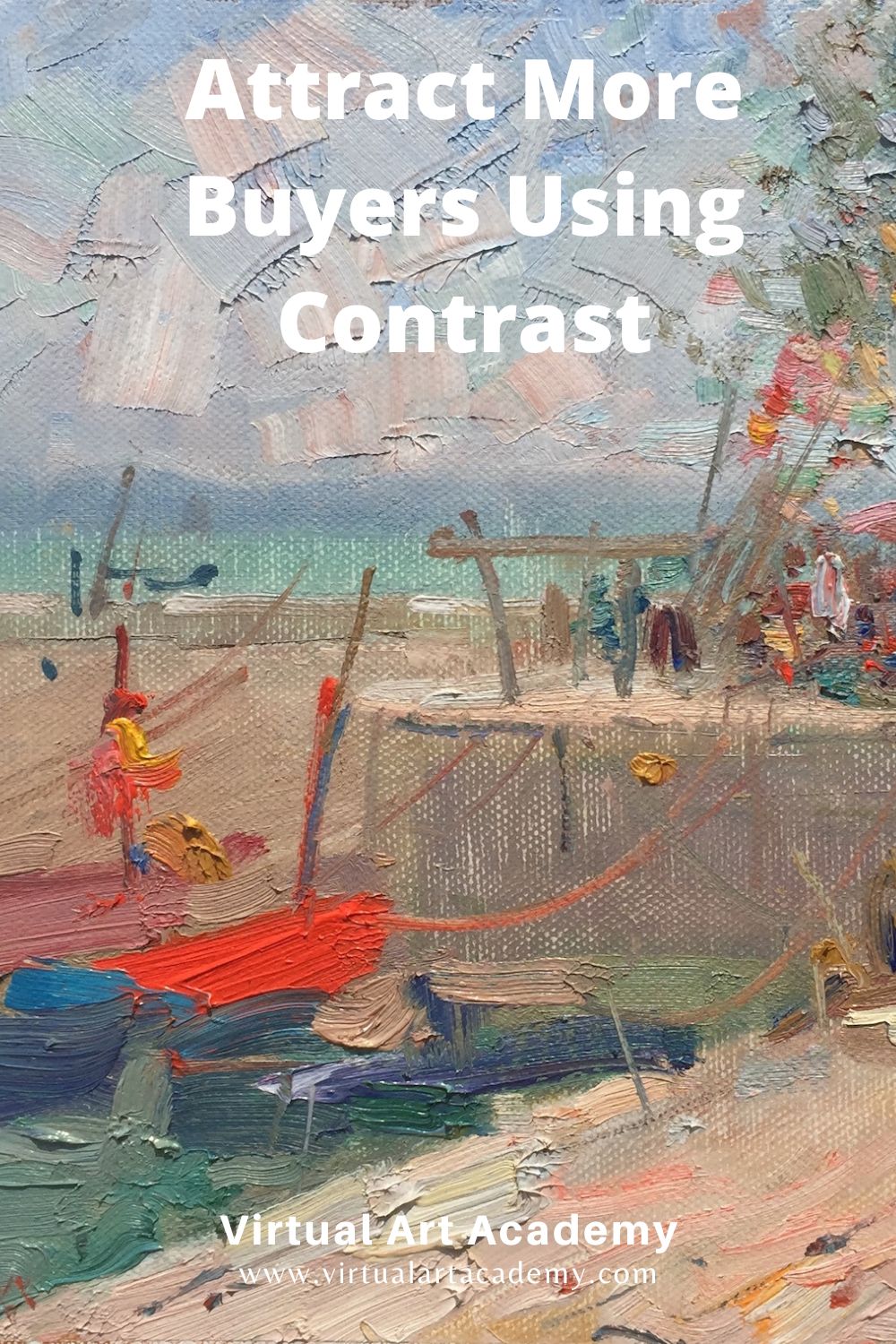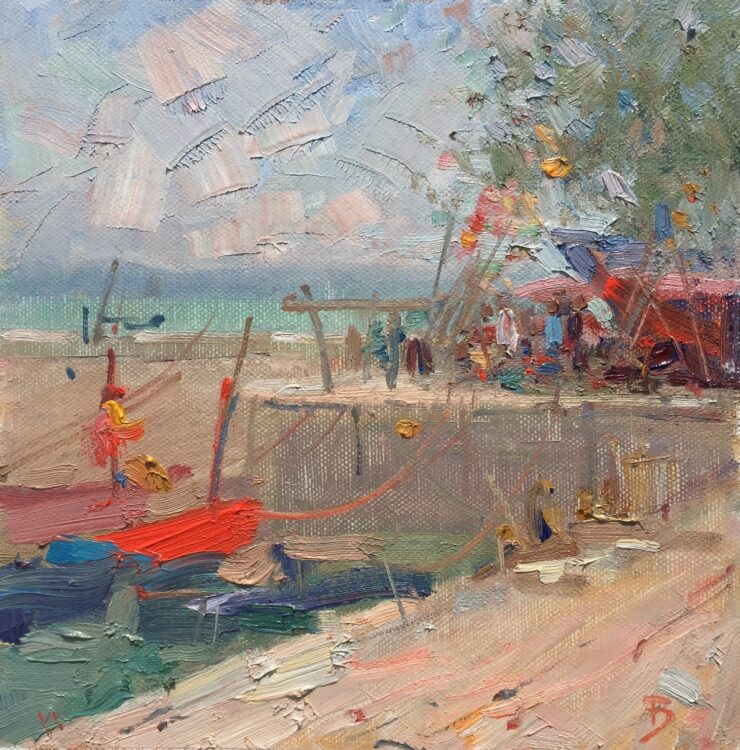(Get free painting tips and plein air painting techniques sent straight to your inbox or on my social media.)
Contrast is an important principle in art that helps create visual interest and emphasizes differences between elements of your painting. Some of the main principles of contrast in art include:
1. Value Contrast
Value contrast in art involves variations in light and dark, where light values contrast with dark values to create depth and form.
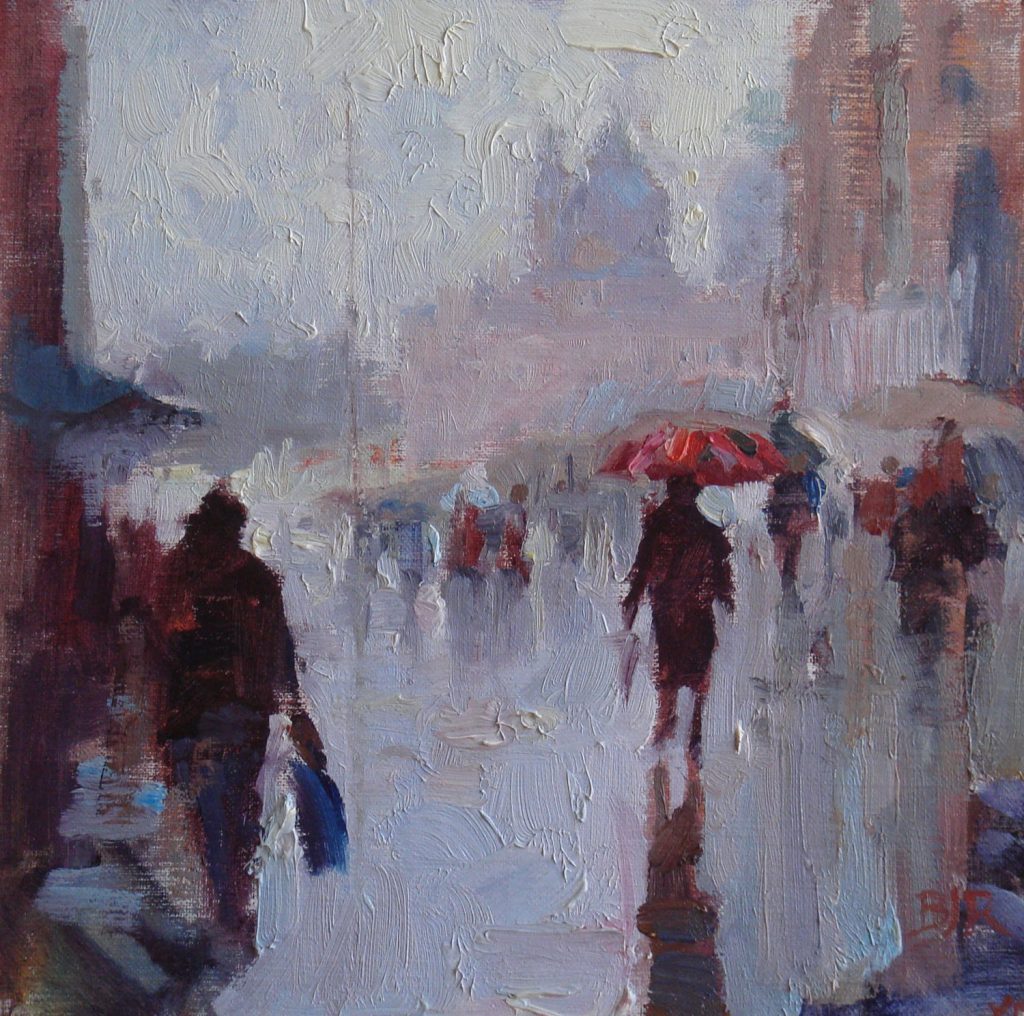
2. Color Contrast
Color contrast utilizes differences in color, such as complementary colors (opposite on the color wheel), to make elements stand out and create visual excitement.
In the painting below there is a strong color contrast between the saturated reds and oranges, and the dull blue grays and beige colors.
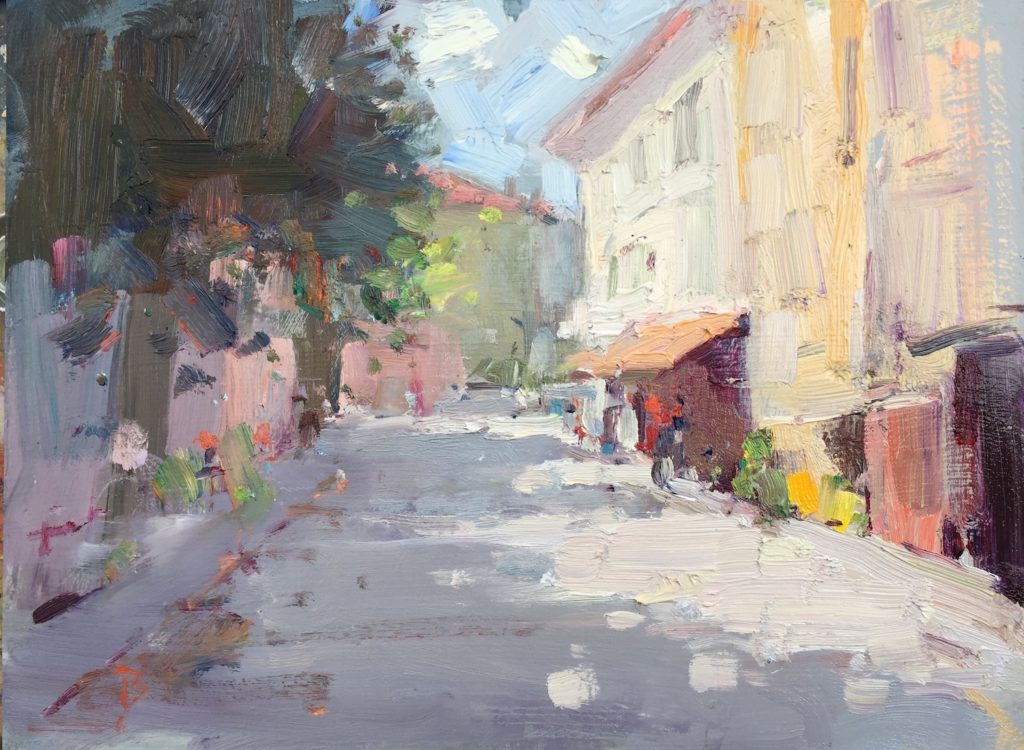
3. Texture Contrast
Texture contrast in art is the juxtaposition of different textures, such as smooth and rough, to add tactile interest and depth to the artwork.
In this painting you can see the sharp contrast between the jagged, rough textured rocks, and the smoothness of the sky on a hot and humid day.
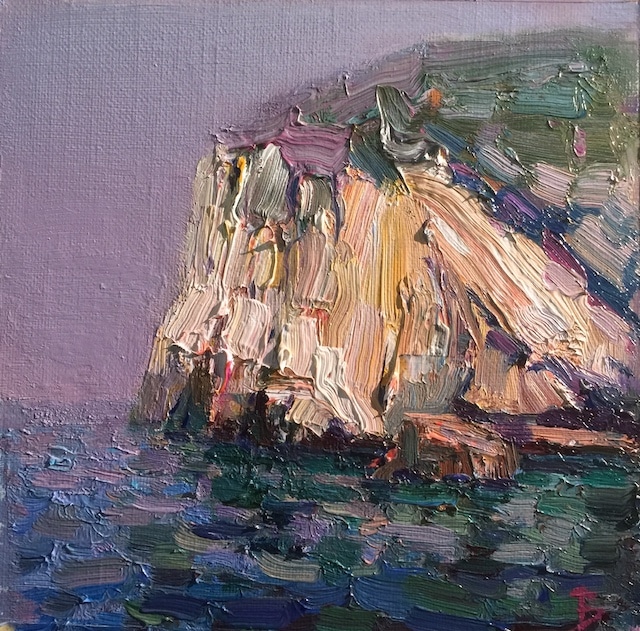
4. Size and Scale Contrast
Size and scale contrast in art refers to the varied sizes and proportions of elements within a composition to draw attention and create a sense of hierarchy.
Here, I added several different sized flowers to create a sense of scale and emphasize the delicacy of the small blue flowers.
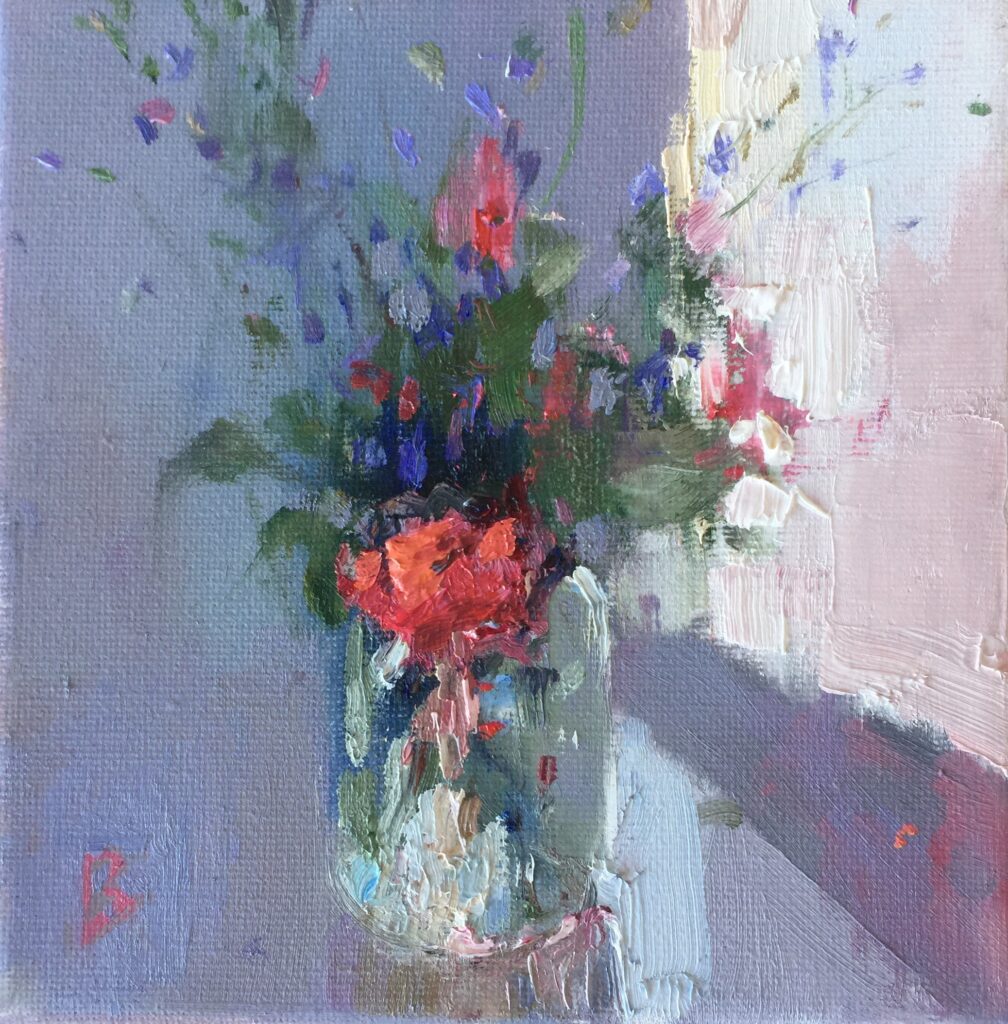
5. Shape and Form Contrast
Shape and form contrast in art uses the differences in shapes and forms, such as organic and geometric shapes, to create visual tension and balance.
This incredible painting by JMW Turner contrasts the serenity of the natural forms in the sky and water, and the geometric forms of industrialization.
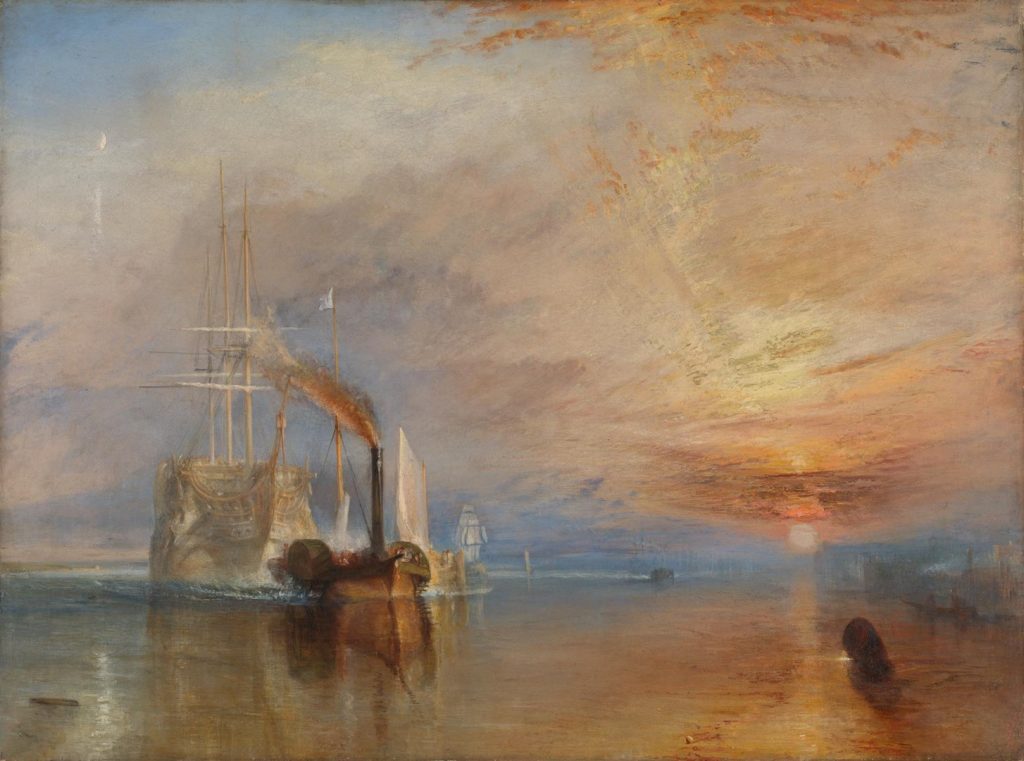
6. Temperature Contrast
Temperature contrast in art uses warm and cool colors to create visual impact and enhance the emotional quality of the artwork.
In the painting below, the warm colors of the pot and pink geraniums contrast with the cool colors of the background Ligurian mountains.
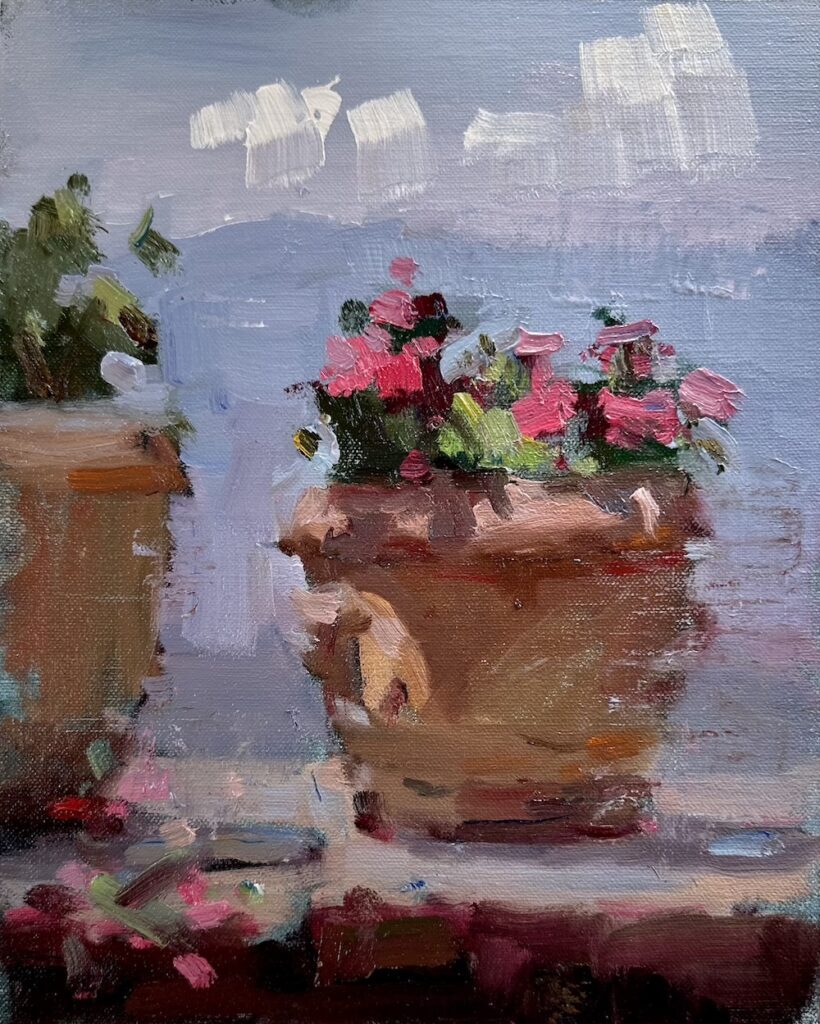
7. Line Contrast
Line contrast in art employs different types of lines (e.g., straight, curved, jagged) to create visual movement and to emphasize focal areas.
You can see how contrast of line is used in my painting of a gondolier in Venice. The straight lines of the mooring poles and the steering oar held by the gondolier, contrast with the graceful curved lines of the gondola. These lines lead the eye to the face and action of the gondolier – the focal point of the painting.
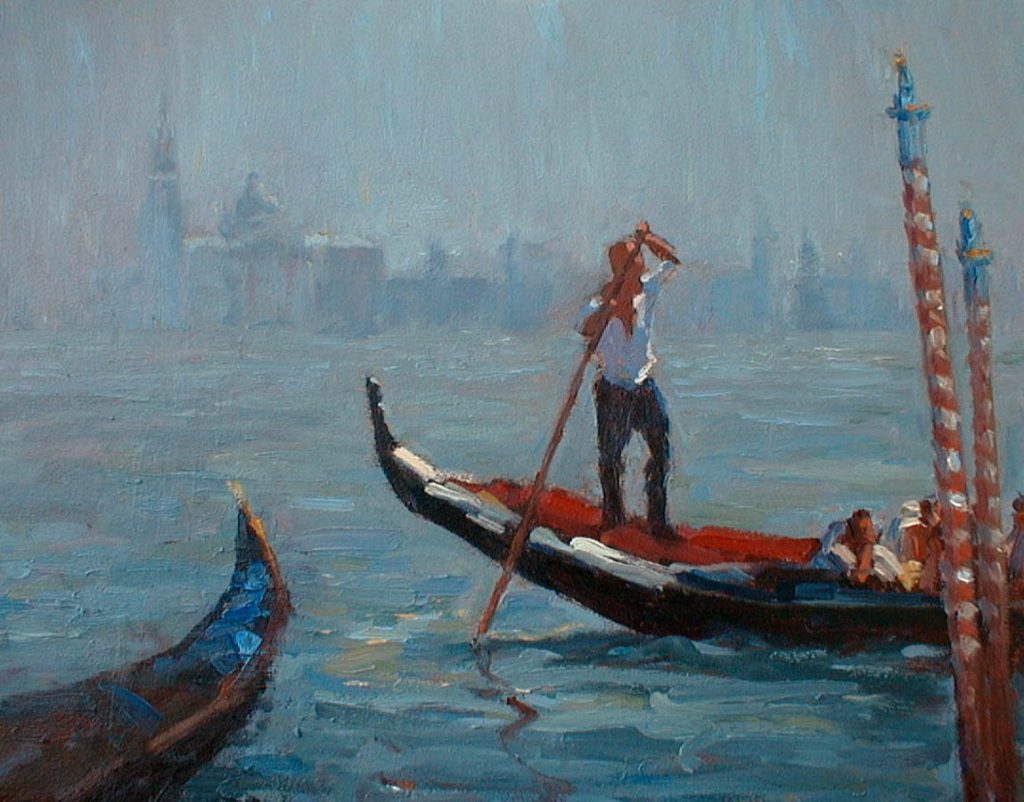
8. Space Contrast
Space contrast in art involves varying the use of positive and negative space to establish balance and create visual interest. You can create contrast in space by placing elements far away from each other, to draw attention creating a hierarchy of the elements. The empty space around the elements is called negative space.
In this painting you can see the main element is the group on the left, and other elements are further away, with the space between them comprising the negative space. This negative space also allows the eye to rest briefly before moving back to the focal areas.
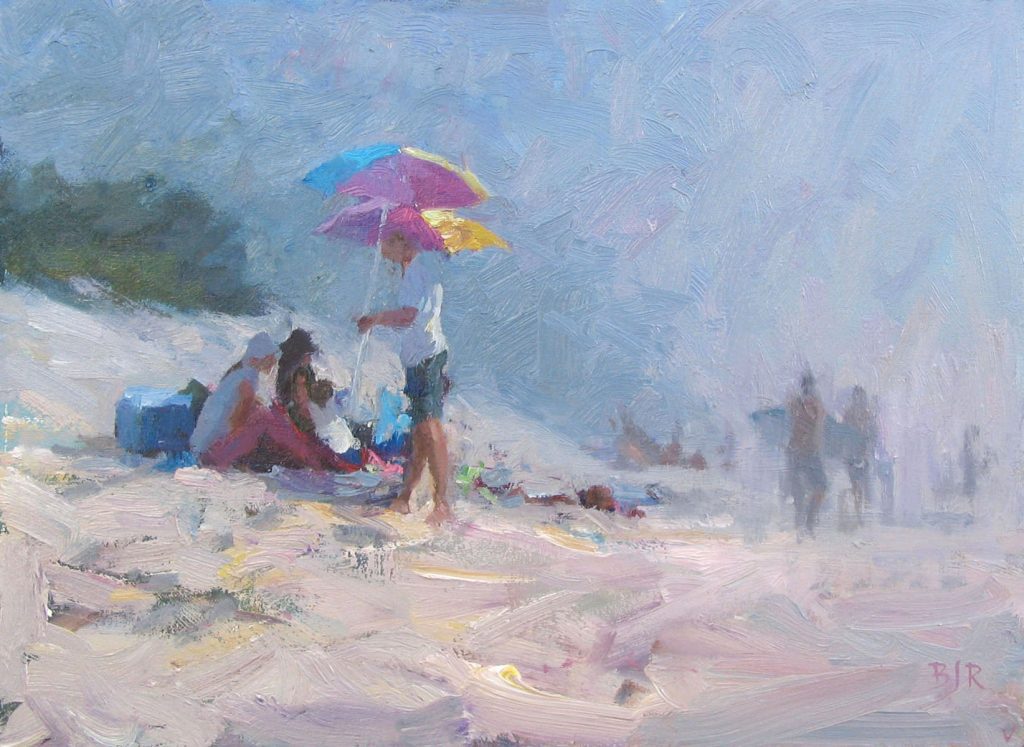
9. Directional Contrast
Directional contrast in art is the use of lines, shapes, or other elements that guide the viewer’s eye in different directions, adding dynamism to the composition.
Look at the different directions the eye follows in this painting, going along the straight line from the bottom left of the foreground road, and creating a zigzag to the left with the horizontal line of the wharf. The curved line of the rope holding the boat contrasts in direction to the sweep of the tree, and the slant of the poles. I also varied the direction and size of the impasto brushstrokes to create a sort of dance in the painting.
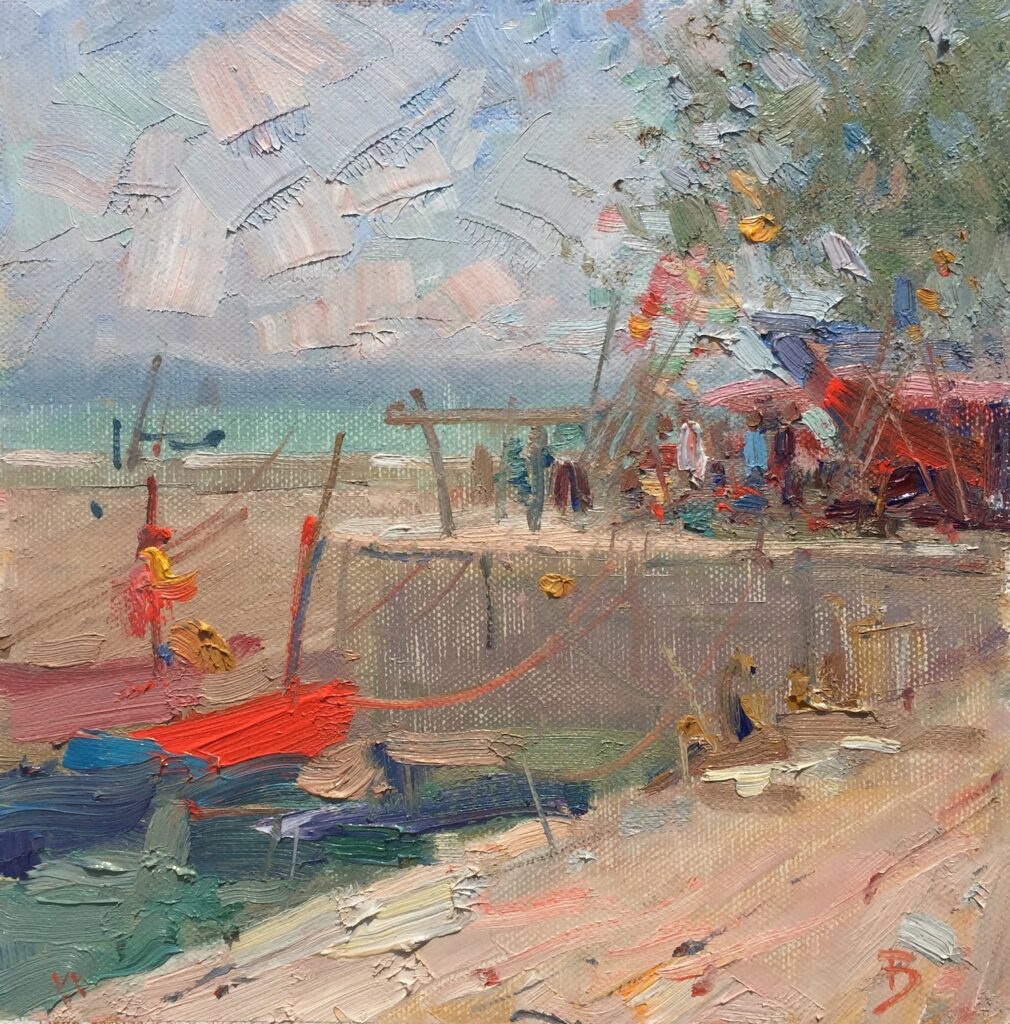
10. Style Contrast
Style contrast in art involves experimenting with different artistic styles within the same artwork or between elements to create diversity and stimulate the viewer’s perception.
I love to blend abstraction with reality. I believe it makes a more interesting painting because the mind has to work a little bit harder to make sense of the subject matter, creating a more intriguing composition.
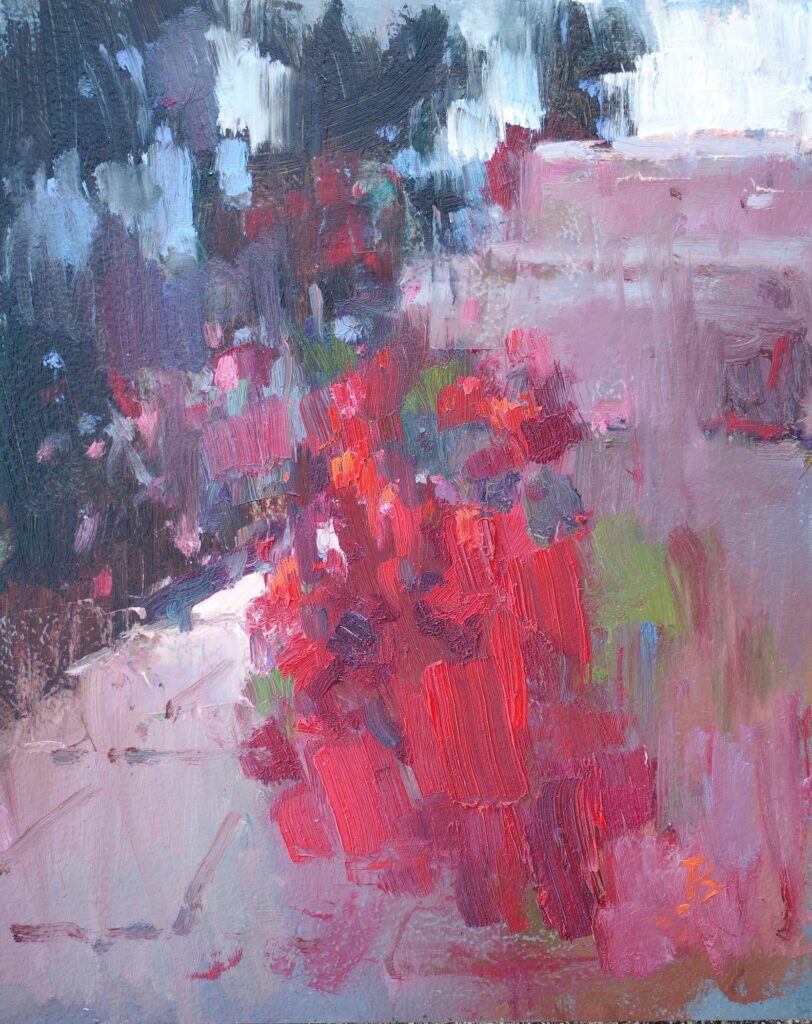
Conclusion
You can use these principles of contrast in art to enhance the visual impact and meaning of your work, and to make your compositions much more engaging and expressive.
What is contrast in art?
Contrast in art is a principle that involves the juxtaposition of different elements within a composition to create visual interest, emphasize differences, and enhance the overall impact of the artwork. It is an essential concept that adds variety, depth, and dynamism to artistic creations.
What is value contrast in art?
Value contrast in art refers to the differences in the lightness and darkness of tones or shades within a composition. It is a fundamental element of visual art that involves manipulating the range of values from very light to very dark. Value contrast is used by artists to create depth, form, and visual interest in their work.
What is color contrast in art?
Color contrast in art refers to the juxtaposition of different colors in a composition to create visual interest, emphasize differences, and enhance the overall impact of the artwork. It’s a fundamental principle used by artists to make elements stand out, evoke emotions, and create a dynamic visual experience. Color contrast can be achieved through various color combinations and relationships.
For more information
For more information, see the lessons on contrast in the Composition Building block of the Virtual Art Academy® Apprentice Program.
Also see contrast in vision in Wikipedia.
Thank You
Thank you for taking the time to read this article. I hope you find it useful. If you would like to get free painting tips by email, please sign up for my free tips newsletter.
If you are interested in a structured approach for learning how to paint, take a look at my online painting classes.
Happy painting!
Barry John Raybould
Virtual Art Academy
What The Students Are Saying
